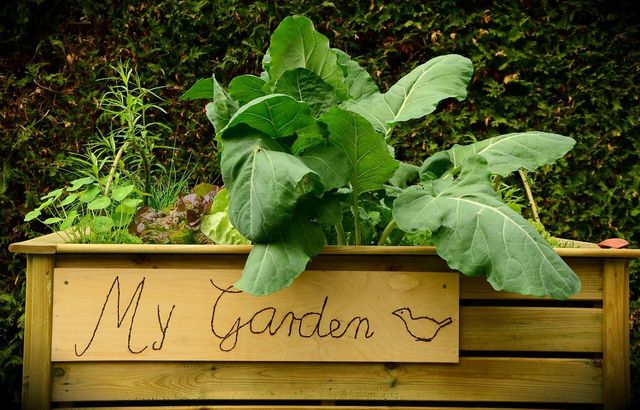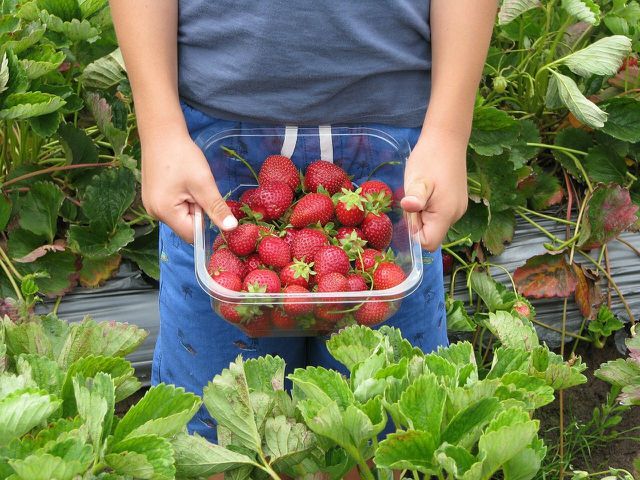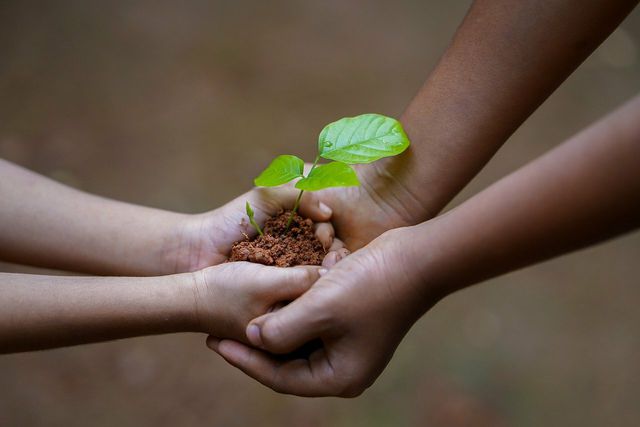Many reasons speak for a children’s bed. It can be a formative experience to plant something yourself for the first time and to harvest it successfully. A sensibly designed bed ensures a good harvest that the little ones can enjoy.
The garden is a great place for children to play and learn. The living world of our native animals and plants is especially exciting for little ones. Many children are very interested when adults are tinkering in the garden and are eager to help out. But the activities in larger areas can also be very monotonous and exhausting for children. As a result, they lose interest in gardening more quickly.
A children’s garden bed can help: A small garden plot of their own, where the children have a say and can develop. There, they are responsible for their own plants and can grow from the challenges and successes that gardening brings. In doing so, you also give them a bit of confidence, which in turn builds their self-esteem.
Through the early experience of following different food plants from seed to harvest, children learn more about the importance of food. Snacking on their own fruit for the first time is a great experience that increases their appreciation for food.
Another good reason for more children’s beds: studies such as those conducted by the British Nutrition Foundation (BNF) and the Australian Council for Educational Research (Acer) reveal serious gaps in children’s knowledge. Many no longer know where the food they eat every day comes from. There are a number of reasons for this, but the main one is a lack of education in this area. As a result, children see no value in food and are not afraid to throw food that is still edible into the garbage can. In addition, many children do not know why fruits and vegetables are so important for their health and eat far too little of them. That’s why it’s so important to do something about it – and a children’s patch is a nice way to do that.
Contents
The basic planning of a child bed

Basically, it does not take much for a children’s bed. First and foremost, it should be a place where children can playfully try things out, experiment and do research. Basically, a little seed and soil are all that’s needed. However, there are a few things you should know before you get started. First, keep in mind that it makes a big difference what age your child is or your children are. The children’s bed should be designed accordingly. Basically, the younger the child, the simpler the bed should be. The following numbers should serve you as a guide:
Two to three years: Two different plant varieties for the beginning are sufficient.
Three to five years: Three to four different varieties offer variety and you and the children will not lose track of the plants.
Six to ten years: Four to six different types of fruit and vegetables, so that older children do not get bored so quickly.
For the size of the children’s bed, one to two square meters is sufficient. If you have older children who have a great desire to garden, then more space is certainly good. But for the beginning, a smaller area is enough to easily manage the continuous care together with the children – especially if you yourself are not so experienced in gardening.
It is especially important to involve the child in the planning and to discuss all steps together. This is very important for the child to get a personal connection to his or her garden bed. By explaining and doing things together in the fresh air, the learning effect is particularly great. They should understand that you can’t just harvest, you have to do something for it. Plant growth is a process.
Children’s bed: different variants
There are many different types of beds that are suitable for a children’s bed. See what you and your kids like best and what translates well into reality. Possibilities include:
- a simple ground bed
- a raised bed
- a herb spiral.
- a small raised bed
- a vertical bed
The bed can also have a special shape. A square bed is the simplest and most practical option. But other shapes are also possible: roundish, star-shaped, heart-shaped or a semicircle.
If a frame is laid for the bed, wooden boards, for example, are suitable. You can also involve your children by having them collect natural materials. Tip: Painting found stones is a nice activity to do together and you can use them as a border for the children’s bed.
What plants are suitable for the children’s raised bed?

For children, time passes more slowly. To prevent impatience, it is advisable to choose fast-growing plants. Ideally, they should also be edible raw, so that the little ones can experience eating directly from the bed. It is also advantageous if they are easy to care for and robust, so that the first experience of growing vegetables and fruit is a sense of achievement. There are plants that support each other when you plant them together in a bed. With mixed cultures you can be sure that the plants will grow better. Nutrient-rich compost in particular ensures good plant growth. Among these varieties, you can choose the most suitable ones together with your children:
Vegetables and salads:
The classic fast-growing vegetable is the radish.
Sowing carrots is not that difficult either.
Picking lettuces work well because your child can always harvest the outer leaves on them.
Tomatoes: Tomato plants are a bit more challenging. However, there are seed-proof varieties that are particularly suitable. Among them is the “red marble”, a wild tomato that can also climb on the ground. The “Blondköpfchen” is also well suited as a yellow outdoor tomato, since you don’t have to prune it out. Through the different colors, children can learn that there are different varieties of tomatoes.
Mini free-range cucumbers are recommended as a suitable variety for the children’s bed.
If you pre-sprout a few of your store-bought organic potatoes, you’ll already have matching tubers to plant. You can also get special seed potatoes.
Kohlrabi often goes over well with kids as a vegetable, too.
Pumpkin is a good idea for older kids. They can hollow out and carve their pumpkin after the harvest, for example.
Fruit and herbs for the children’s bed

Fruit:
Strawberries are convenient for a child’s bed. These varieties are particularly well suited: Tuscany, Sweet Heart and Senga sengana.
Blueberries require rather acidic soil and can grow well in a tub with appropriate soil.
Planting currants is worth it right away for a longer period of time. These perennial shrubs bear anew each summer.
Herbs:
You can’t go wrong with chives in a child’s bed. It grows back after cutting and tastes good to most children. Leave a chive plant unharvested and show your kids what chive flowers look like.
Cress grows especially fast and is ideal for the flower bed or even the windowsill.
Parsley is easy for kids to harvest themselves, and they can do it several times. They are sure to enjoy their contribution to dinner.
The fragrant mint is great if the kids like to drink tea.
With nasturtium, everything is edible: the leaves and the flowers.
Edible flowers are another great idea for the children’s bed. Suitable for this purpose are, for example: Borage, marigold and sunflower.
For plants that stimulate the senses, you can plant the soft woolly zest or even lavender that smells good.
Attention poisonous plants! No poisonous plants, such as foxglove, belong in the children’s bed.
Children raised bed without own garden

Don’t have your own garden, but still want to garden with kids? We present you some creative solutions that make it possible.
With tubs and plant pots you can grow certain plants on your balcony. Particularly well suited for an enclosed container are: Strawberries, kohlrabi, lettuces, herbs and blueberries. Even on the windowsill you can garden experimentally together with children. Cut off parts of certain vegetables can be replanted. Your kids will be fascinated that such a thing is possible.
Do you have friendly parents with kids in your neighborhood?
It’s possible to join forces and get the “children’s bed” project off the ground for several children at once. If there is no room at your place, then maybe at a neighbor’s.

